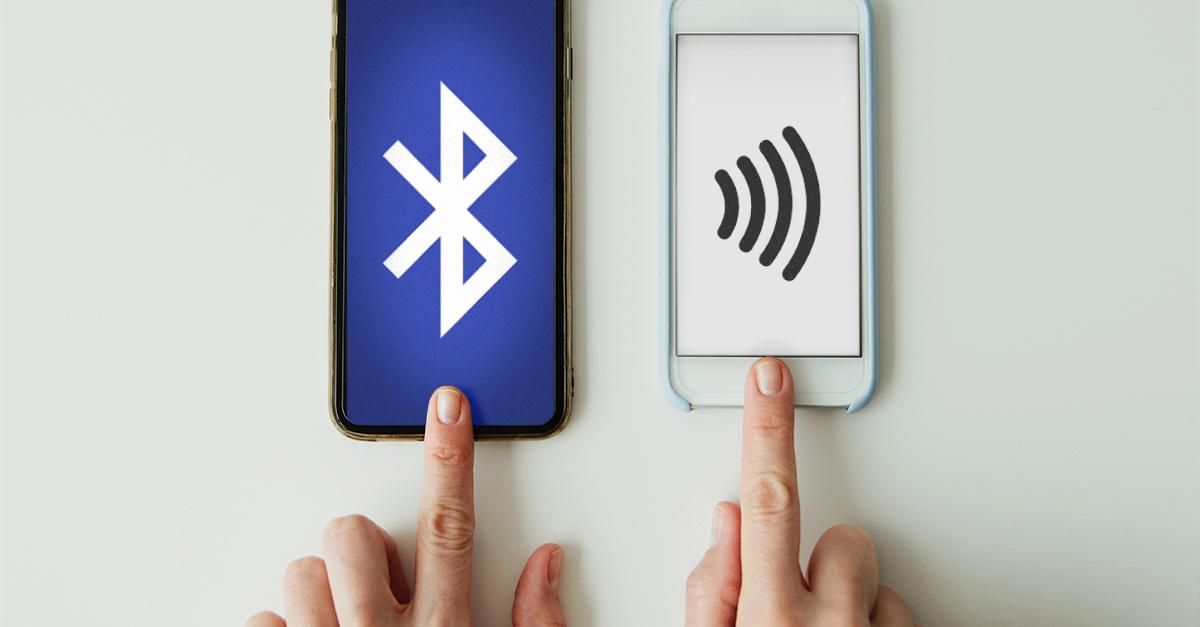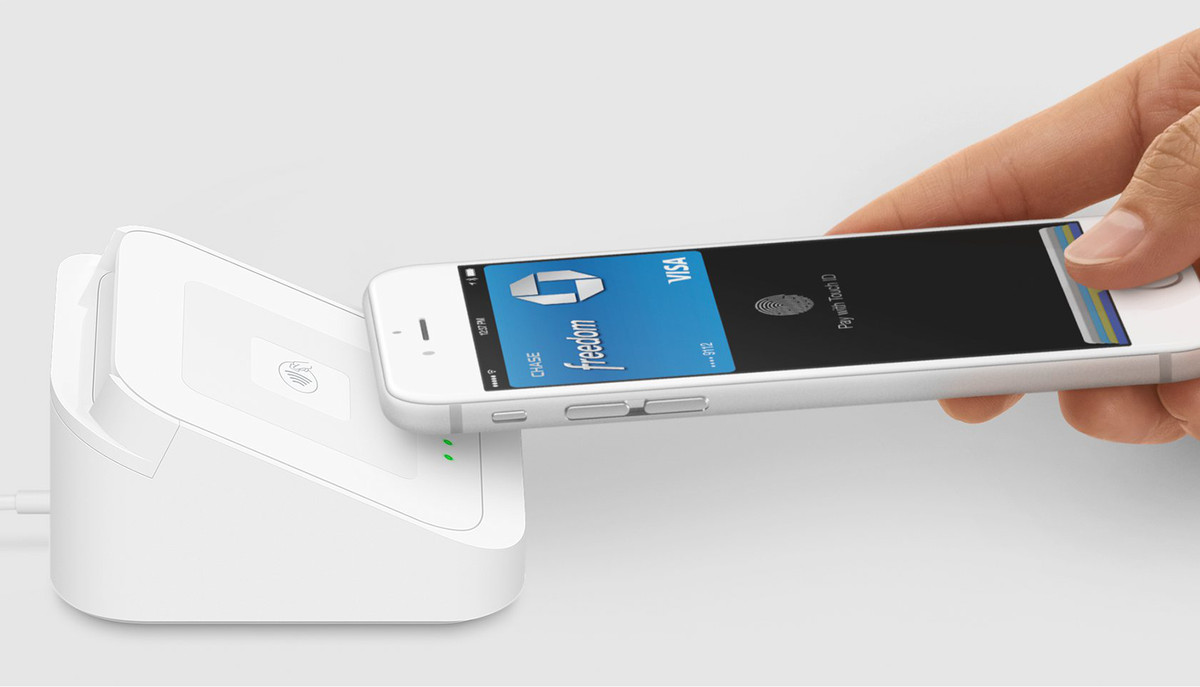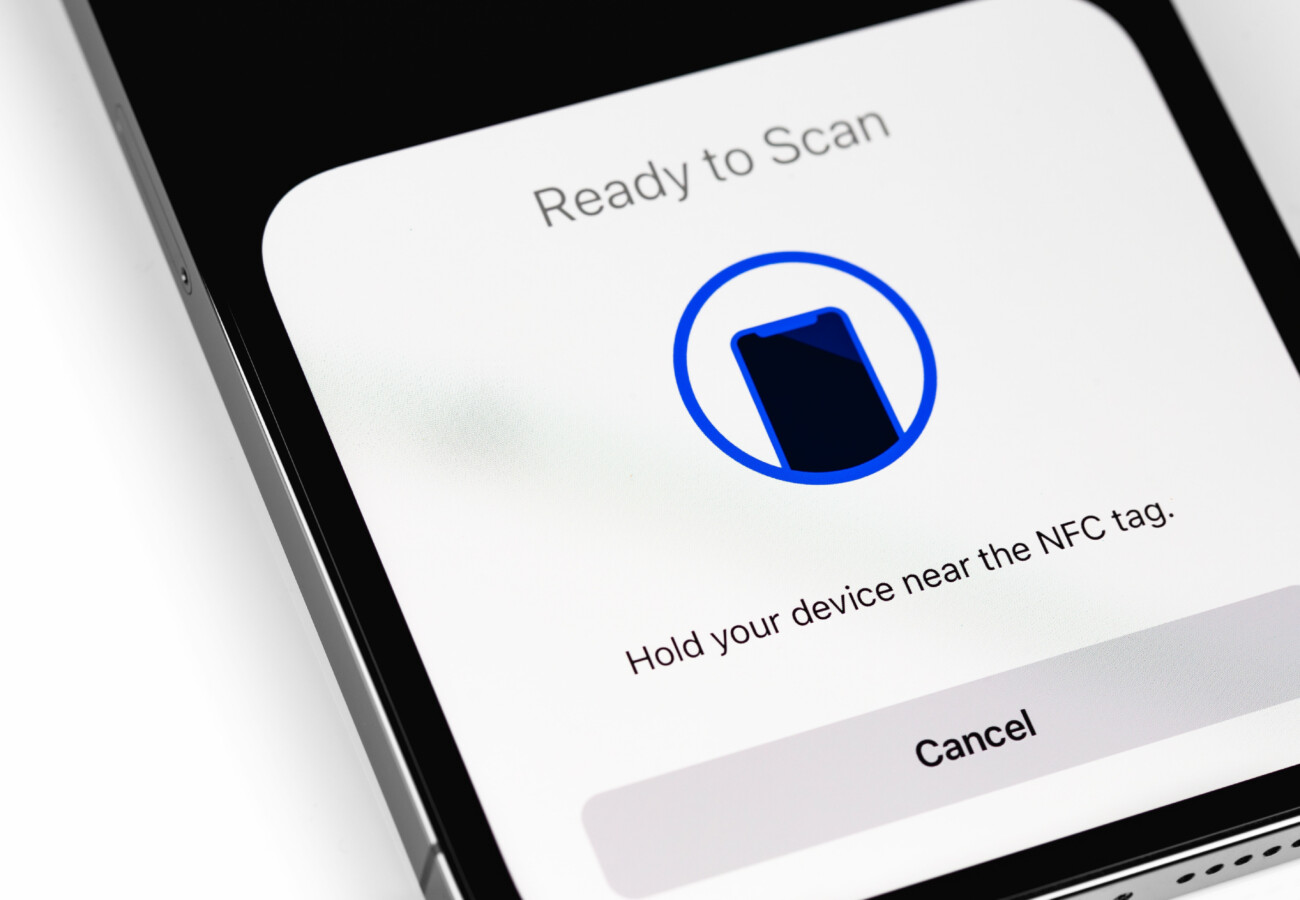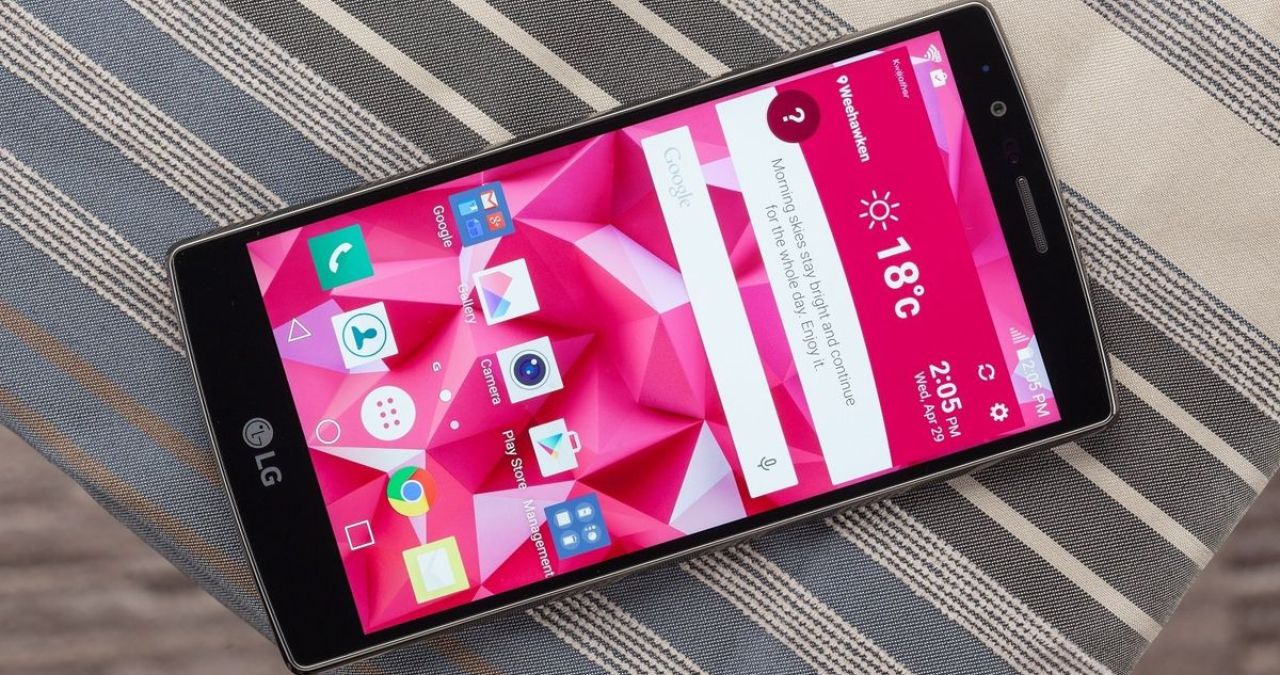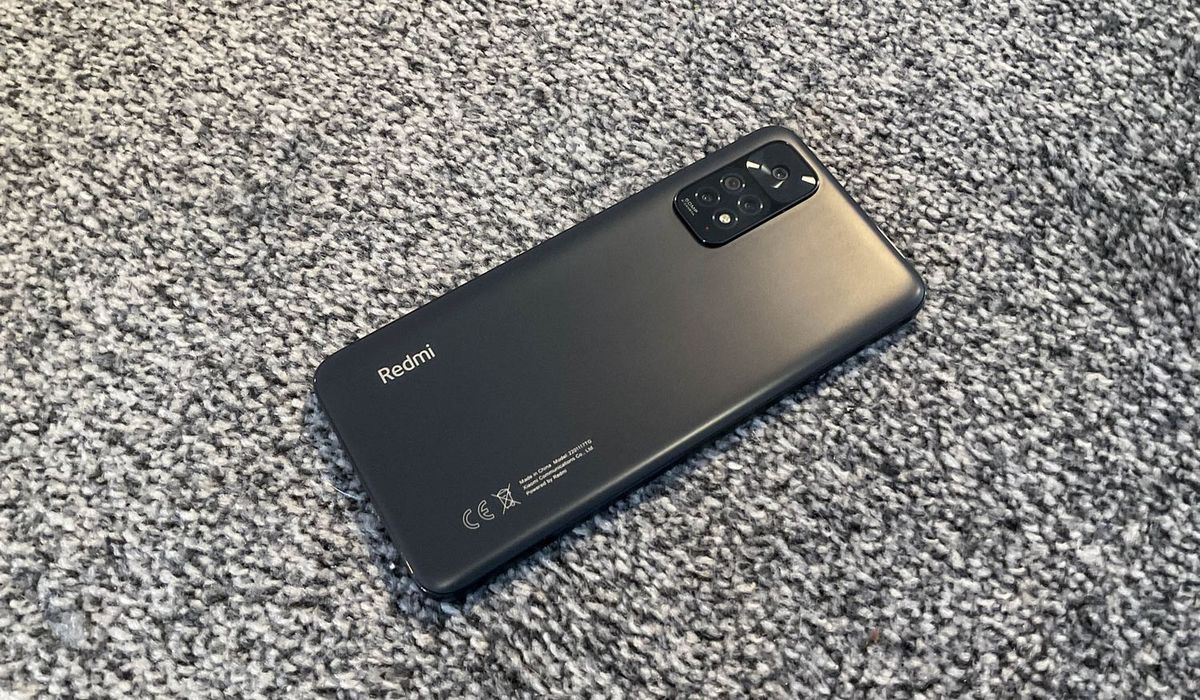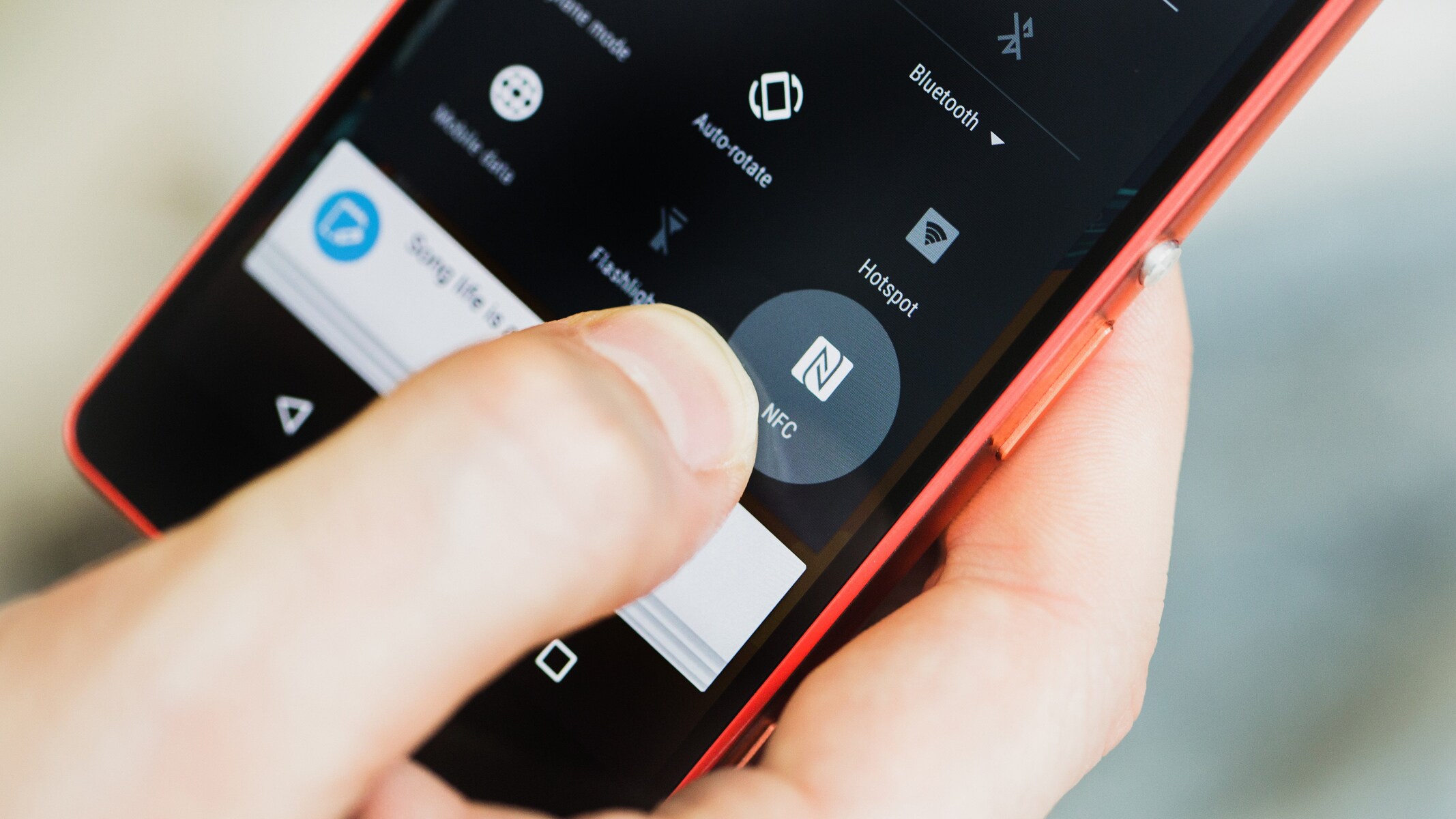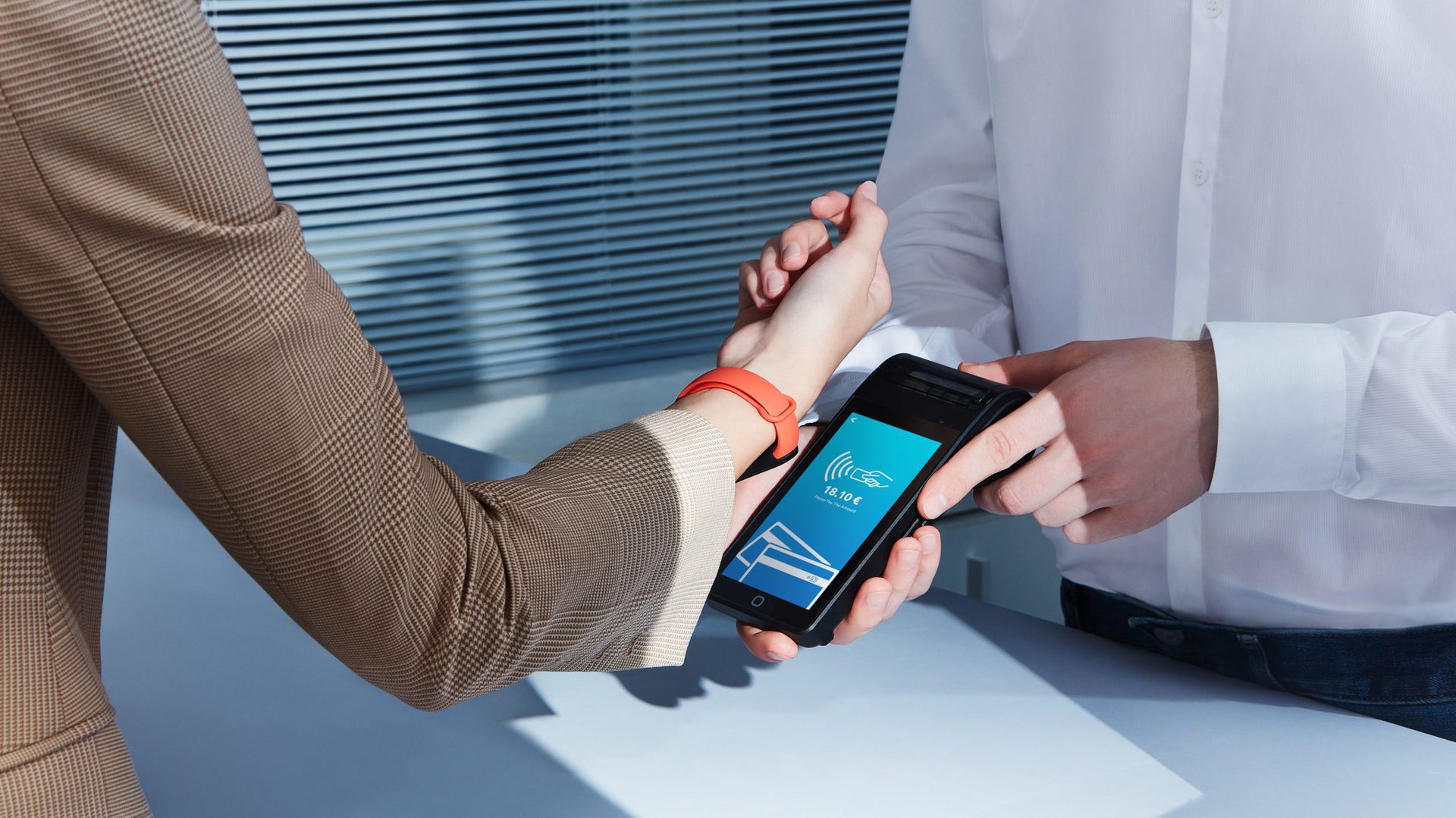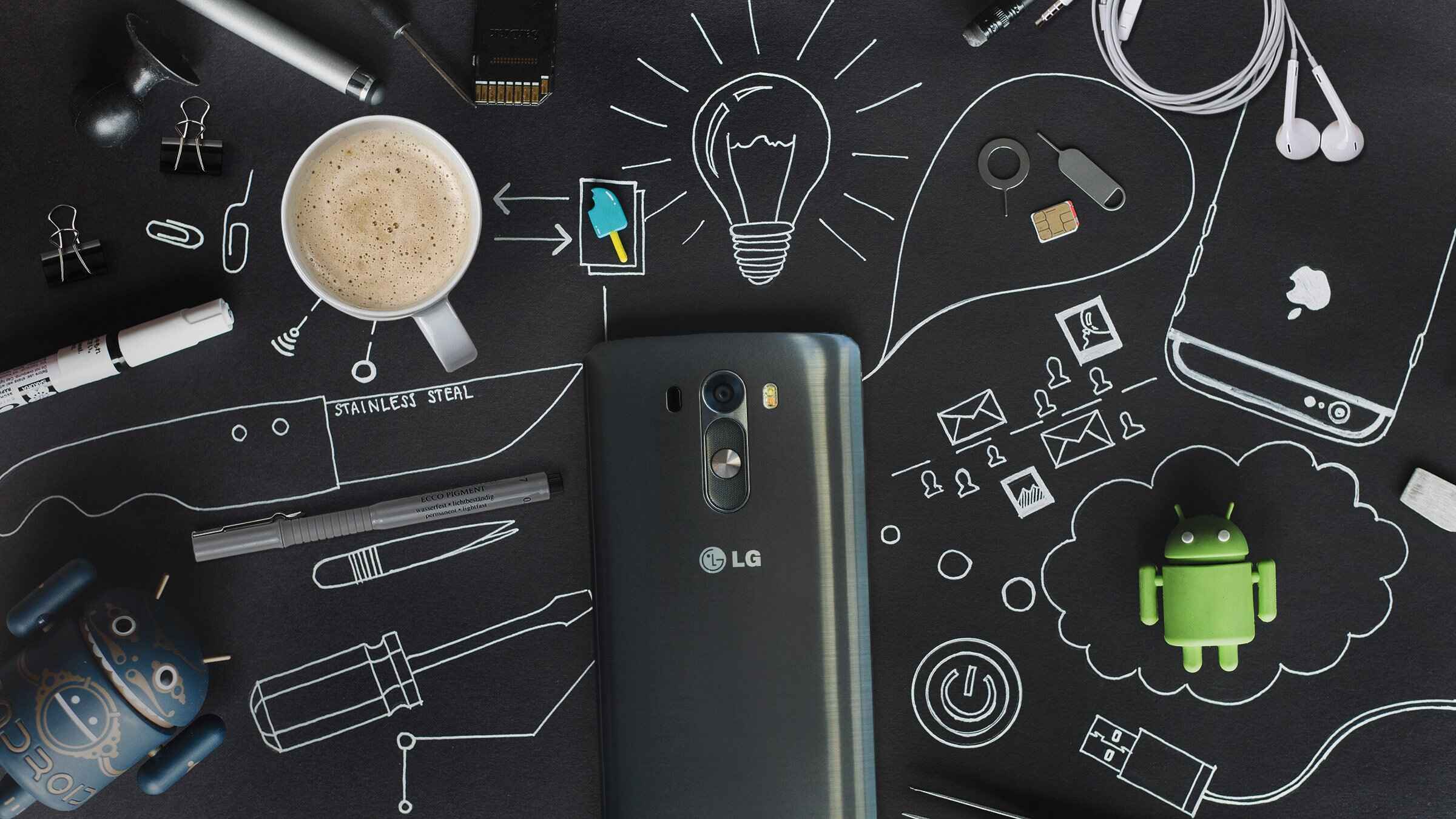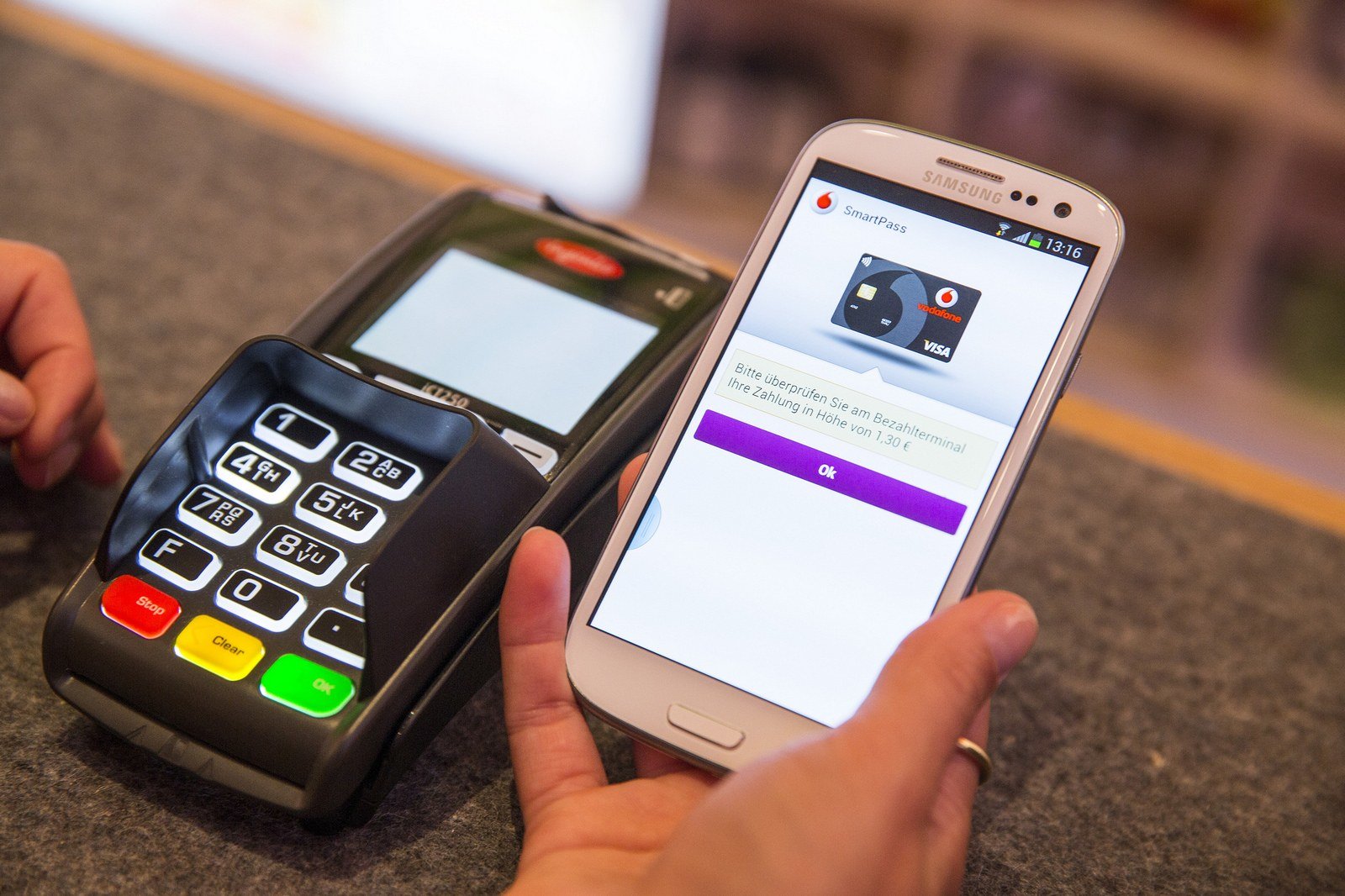Introduction
Welcome to the world of NFC on Bluetooth! In this digital age, technology is constantly evolving to make our lives more convenient and efficient. Two such advancements in the field of wireless communication are NFC (Near Field Communication) and Bluetooth. While both NFC and Bluetooth have been around for some time, the combination of the two – NFC on Bluetooth – brings forth a new realm of possibilities.
NFC is a short-range wireless technology that enables communication between devices in close proximity. It allows for easy and secure transfer of data, such as contact information, payment details, or URLs, by simply bringing two NFC-enabled devices close together. On the other hand, Bluetooth is a wireless technology that allows for the seamless connection of devices over longer distances, typically up to 100 meters.
When NFC technology is integrated with Bluetooth, it opens up a wide range of applications and benefits. NFC on Bluetooth allows for quick and hassle-free pairing of devices with a simple tap or wave. This combination offers a seamless and secure way to connect devices, transfer data, and enable various functionalities without the need for complex setup processes.
Whether it’s sharing files between smartphones, connecting audio devices, or even making payments, NFC on Bluetooth provides a user-friendly and efficient solution. With just a few simple taps, devices can establish a connection and exchange data, making it ideal for situations where convenience and speed are paramount.
Throughout this article, we will dive into the details of NFC on Bluetooth, exploring how it works, its benefits, its use cases, and its limitations. By the end, you’ll have a thorough understanding of NFC on Bluetooth and its potential to enhance our wireless communication experiences. So, let’s get started!
What is NFC?
NFC, which stands for Near Field Communication, is a short-range wireless communication technology that allows devices to exchange data when they are in close proximity to each other. It is a convenient and secure way to transfer information without the need for physical contact or complex setup processes.
At its core, NFC technology is based on electromagnetic radio fields. It operates on high-frequency radio waves, typically in the range of 13.56 megahertz. NFC-enabled devices, such as smartphones, tablets, or smartwatches, contain a small NFC chip that enables communication with other NFC devices.
NFC offers two main modes of operation: active and passive. In active mode, both the sending and receiving devices generate an electromagnetic field, allowing them to communicate with each other. In passive mode, one device generates the electromagnetic field, and the other device is only capable of receiving data.
One of the key features of NFC is its ability to establish a connection quickly and effortlessly. By simply bringing two NFC-enabled devices close together, often referred to as tapping or waving, a connection is established and data can be exchanged.
NFC technology has a variety of applications in our day-to-day lives. For example, it is commonly used for contactless payments, where users can make transactions by simply tapping their NFC-enabled smartphones or credit cards on payment terminals.
Additionally, NFC can be utilized for sharing files, such as photos or videos, between devices. By tapping two NFC-enabled smartphones together, users can initiate a transfer of data without the need for cables or manual pairing processes.
In recent years, NFC technology has also been integrated into various smart devices, such as smart locks, smart home systems, and wearable devices. This integration allows for convenient interactions, such as unlocking doors with a tap of a smartphone or connecting wearable devices to smartphones for fitness tracking and notifications.
Overall, NFC technology provides a fast, secure, and user-friendly way to exchange data and enable various functionalities between devices. Its versatility and simplicity make it an essential component in the realm of wireless communication.
What is Bluetooth?
Bluetooth is a wireless communication technology that allows for the seamless connection and data exchange between devices over short distances. It eliminates the need for cables or physical connections, providing a convenient and efficient way to connect and interact with various devices.
The term “Bluetooth” was inspired by the 10th-century Danish King Harald Bluetooth, who was known for his ability to unite different factions. Similarly, Bluetooth technology aims to unite different devices and enable them to communicate and collaborate.
Bluetooth operates on radio waves in the unlicensed 2.4 gigahertz band, which is available globally for use by electronic devices. It uses low-power wireless signals to establish connections between devices, conserving energy and allowing for extended battery life.
One of the key features of Bluetooth technology is its ability to connect multiple devices simultaneously. This enables users to create a network of interconnected devices, commonly known as a “Bluetooth network” or “Bluetooth mesh,” where information and commands can be easily shared.
The range of Bluetooth connections can vary depending on the class of device. For class 1 devices, which are typically used in industrial settings, the range can reach up to 100 meters. Class 2 devices, commonly found in consumer electronics, have a range of about 10 meters. Finally, class 3 devices, such as wireless earphones, have a range of around 1 meter.
Bluetooth technology is widely used in various applications. One common use is for wireless audio streaming. Bluetooth-enabled devices, such as smartphones or computers, can be paired with Bluetooth speakers, headphones, or car audio systems, allowing for wireless music playback and hands-free calling.
Bluetooth is also commonly used for file sharing between devices. By pairing two Bluetooth-enabled devices, users can send and receive files, such as photos, videos, or documents, without the need for an internet connection or physical cables.
Furthermore, Bluetooth technology is utilized in home automation systems, IoT (Internet of Things) devices, and smartwatches, allowing users to control and monitor their devices remotely.
In summary, Bluetooth technology provides a wireless and versatile solution for connecting and communicating between devices. Its widespread adoption and compatibility make it an essential component of our interconnected world.
NFC on Bluetooth: An Overview
NFC on Bluetooth is a combination of two powerful wireless technologies that brings together the convenience of Near Field Communication (NFC) with the versatility of Bluetooth. It allows devices to seamlessly connect, exchange data, and perform various functions with a simple tap or wave.
This integration of NFC and Bluetooth enhances the capabilities of devices, making them more efficient and user-friendly. Instead of relying solely on NFC for short-range communication or Bluetooth for longer-range connections, NFC on Bluetooth provides a unified solution that combines the best of both worlds.
With NFC on Bluetooth, devices can establish connections quickly and effortlessly. By bringing two NFC-enabled devices close together, they can automatically initiate a Bluetooth pairing process. This eliminates the need for manual setup, PINs, or complex configurations, making it easier than ever to connect devices.
Once the NFC on Bluetooth connection is established, devices can exchange data, such as files, contacts, or URLs, with greater speed and convenience. Users can simply tap their NFC-enabled smartphones to another NFC on Bluetooth device, and the data transfer begins.
In addition to data transfer, NFC on Bluetooth also enables the seamless pairing of audio peripherals, such as headphones or speakers. Instead of going through traditional Bluetooth pairing methods, users can simply tap their NFC-enabled smartphone to the NFC on Bluetooth-enabled audio device to establish a connection.
NFC on Bluetooth also enhances the security of device connections. By utilizing NFC for the initial pairing process, which requires physical proximity, it adds an extra layer of authentication. This reduces the risk of unauthorized access and ensures a secure connection between devices.
Another advantage of NFC on Bluetooth is its compatibility with a wide range of devices. NFC on Bluetooth-enabled smartphones, tablets, wearables, and other smart devices can seamlessly connect and interact with each other. This interoperability expands the possibilities of cross-device communication and collaboration.
Overall, NFC on Bluetooth is a powerful combination of two wireless technologies that simplifies device connectivity and data transfer. Its seamless pairing, fast data exchange, enhanced security, and wide device compatibility make it a valuable feature for modern devices.
How does NFC on Bluetooth work?
NFC on Bluetooth works by combining the short-range communication capabilities of Near Field Communication (NFC) with the broader connectivity features of Bluetooth. This integration allows for seamless and convenient device pairing, data transfer, and functionality initiation.
The process of NFC on Bluetooth typically involves three main steps: initiation, identification, and connection establishment.
Firstly, to initiate an NFC on Bluetooth connection, the user brings two NFC-enabled devices close together. This physical proximity triggers the NFC chip in the devices, enabling them to communicate with each other.
Next, during the identification step, the NFC chips exchange information between the devices. This information can include device identification data, security credentials, or available functionality.
Once the devices have successfully identified each other, they proceed to establish a Bluetooth connection. This is done automatically, without the need for manual pairing or additional user intervention. The NFC chip facilitates the seamless transfer of the devices’ Bluetooth data, such as device names, passkeys, or encryption keys.
Once the Bluetooth connection is established, the devices are ready to exchange data or initiate specific functionalities. For example, users can transfer files, contacts, or URLs by simply tapping their NFC-enabled device to another NFC on Bluetooth device. The data transfer will now take place via the Bluetooth connection, providing faster transfer speeds and a wider range for communication.
In addition to data transfer, NFC on Bluetooth also enables quick and effortless pairing of audio peripherals. By tapping an NFC-enabled smartphone to an NFC on Bluetooth-enabled audio device, such as headphones or speakers, they can immediately connect via Bluetooth for audio streaming.
The integration of NFC on Bluetooth also enhances security. The physical proximity requirement of NFC ensures a more secure connection initiation, reducing the risk of unauthorized access or pairing with malicious devices.
Overall, NFC on Bluetooth combines the simplicity of NFC initiation with the versatility of Bluetooth connectivity. This seamless integration allows for easy device pairing, faster data transfer, and the initiation of various functionalities, providing a more convenient and efficient wireless communication experience.
Benefits of NFC on Bluetooth
NFC on Bluetooth offers a range of benefits that enhance the wireless communication experience between devices. By combining the capabilities of Near Field Communication (NFC) and Bluetooth, NFC on Bluetooth provides seamless connectivity, fast data transfer, enhanced security, and improved user convenience.
One of the key benefits of NFC on Bluetooth is the ease of device pairing. With just a simple tap or wave, NFC on Bluetooth-enabled devices can automatically initiate a Bluetooth connection. This eliminates the need for manual pairing processes, complex configurations, or entering PIN codes, making it quick and effortless to establish connections.
Another advantage is the fast and convenient data transfer between NFC on Bluetooth devices. Whether it’s sharing files, contacts, or URLs, users can simply tap their NFC-enabled device to another NFC on Bluetooth device, and the data transfer begins. This allows for seamless and efficient information exchange without the need for cables or internet connectivity.
Enhanced security is another benefit of NFC on Bluetooth. The NFC chip adds an extra layer of authentication during the connection initiation phase. By requiring physical proximity, NFC provides a secure way to establish connections and reduces the risk of unauthorized access to devices.
NFC on Bluetooth also offers improved user convenience. The seamless connection establishment and data transfer process save users time and effort. It eliminates the need for complicated setup procedures or remembering multiple passkeys, making it easier for users to connect and interact with their devices.
Furthermore, NFC on Bluetooth expands the possibilities of cross-device communication and collaboration. With wide device compatibility, NFC on Bluetooth-enabled smartphones, tablets, wearables, and other smart devices can seamlessly connect and interact with each other. This opens up opportunities for innovative applications, such as controlling smart home devices, sharing media between devices, or collaborating in a multiperson gaming experience.
Additionally, NFC on Bluetooth provides improved energy efficiency compared to traditional Bluetooth connections. NFC consumes significantly less power during the connection initiation phase, conserving battery life and enabling longer usage times for devices.
In summary, the benefits of NFC on Bluetooth include seamless device pairing, fast data transfer, enhanced security, improved user convenience, expanded device compatibility, and energy efficiency. By combining the strengths of NFC and Bluetooth technologies, NFC on Bluetooth enhances the wireless communication experience, making it more user-friendly, efficient, and secure.
Use cases of NFC on Bluetooth
NFC on Bluetooth brings together the capabilities of Near Field Communication (NFC) and Bluetooth, opening up a wide range of use cases in various industries and everyday scenarios. Let’s explore some of the practical applications of NFC on Bluetooth:
- Contactless Payments: NFC on Bluetooth enables secure and convenient contactless payments. By tapping an NFC-enabled smartphone or smartwatch to a payment terminal, users can quickly and securely complete transactions without the need for physical credit cards or cash.
- Smart Home Integration: With NFC on Bluetooth, users can easily connect and control smart home devices such as lights, thermostats, or security systems. By tapping their smartphone to an NFC on Bluetooth-enabled device, they establish a seamless and secure connection, enabling them to control and monitor their smart home ecosystem effortlessly.
- Audio Pairing: NFC on Bluetooth simplifies the process of pairing audio devices such as headphones or speakers. Instead of going through traditional Bluetooth pairing methods, users can tap their NFC-enabled smartphone to an NFC on Bluetooth-enabled audio device to establish a wireless connection quickly.
- Sharing Files and Media: NFC on Bluetooth facilitates easy file sharing and media transfer between devices. By simply tapping two NFC on Bluetooth-enabled devices together, users can exchange files, photos, videos, or even music playlists seamlessly.
- Automotive Connectivity: NFC on Bluetooth is utilized in automotive applications for convenient and secure connectivity. Users can tap their NFC-enabled smartphones to NFC on Bluetooth-equipped vehicles for functions such as hands-free calling, music streaming, or accessing vehicle information.
- Mobile Ticketing and Access Control: NFC on Bluetooth enables mobile ticketing systems and access control solutions. By tapping an NFC-enabled device to NFC on Bluetooth-enabled ticketing terminals or access gates, users can quickly and securely gain entry to events, public transportation systems, or secure premises.
- Healthcare Applications: NFC on Bluetooth offers potential applications in the healthcare industry. For example, NFC on Bluetooth-enabled smart wearables can securely transmit health data to healthcare providers, enabling remote monitoring and faster access to medical information.
- Retail and Loyalty Programs: NFC on Bluetooth is utilized in retail settings for customer loyalty programs and targeted marketing. By tapping their NFC-enabled devices to NFC on Bluetooth-enabled retail devices, customers can receive personalized offers, make payments, or collect loyalty points effortlessly.
These are just a few examples of the many use cases of NFC on Bluetooth. From payments and smart home integration to automotive connectivity and healthcare applications, NFC on Bluetooth offers endless possibilities for seamless and secure wireless communication in various domains.
NFC on Bluetooth vs NFC-only Devices
When it comes to wireless communication capabilities, both NFC on Bluetooth and NFC-only devices offer their unique features and functionalities. Let’s compare the two to understand their differences and advantages:
NFC-only Devices:
NFC-only devices, as the name suggests, are equipped with NFC technology but do not have built-in Bluetooth functionality. These devices are primarily focused on short-range communication and data transfer in close proximity. Some key characteristics of NFC-only devices include:
- Communication Range: NFC-only devices have a limited communication range of a few centimeters. They rely on close contact, typically a tap or a wave, for establishing connections and data transfer.
- Effortless Pairing: NFC-only devices have simplified pairing processes. By tapping two NFC-enabled devices together, users can quickly initiate data transfer or establish a connection without the need for manual pairing procedures or complex setup configurations.
- Data Transfer Speed: NFC-only devices offer relatively slower data transfer speeds compared to Bluetooth. They are ideal for small file transfers, contact sharing, or initiating actions such as making payments or accessing URLs.
- Security: NFC-only devices provide a secure means of communication due to the requirement of close proximity for connections. This reduces the risk of unauthorized access or data interception.
- Device Compatibility: NFC-only devices can communicate with other NFC-enabled devices, regardless of the manufacturer or operating system. This level of compatibility ensures seamless data exchange and interaction.
NFC on Bluetooth Devices:
NFC on Bluetooth devices combine the capabilities of both NFC and Bluetooth technologies to provide extended functionalities and enhanced connectivity. They offer the advantages of NFC for seamless pairing and data transfer, along with the broader range and versatility of Bluetooth. Some key characteristics of NFC on Bluetooth devices include:
- Communication Range: NFC on Bluetooth devices have the advantage of longer communication ranges compared to NFC-only devices. Bluetooth technology allows for connections up to a distance of 100 meters, depending on the device class.
- Seamless Pairing: NFC on Bluetooth devices leverage NFC technology for effortless pairing. By tapping or waving two NFC-enabled devices together, they can automatically initiate a Bluetooth connection, eliminating the need for complex setup procedures or manual pairing.
- Data Transfer Speed: NFC on Bluetooth devices offer faster data transfer speeds compared to NFC-only devices. This enables more efficient file transfers, multimedia streaming, or sharing larger amounts of data between devices.
- Enhanced Device Compatibility: NFC on Bluetooth devices maintain the same level of compatibility as NFC-only devices. They can communicate with other NFC-enabled devices seamlessly, but additionally, they can also establish Bluetooth connections with a broader range of devices.
- Expanded Functionality: NFC on Bluetooth devices provide expanded functionality compared to NFC-only devices. They can pair with audio peripherals, connect to smart home systems, integrate with automotive applications, and more, making them versatile for a wide range of use cases.
In summary, while NFC-only devices focus on short-range communication and data transfer, NFC on Bluetooth devices extend the capabilities by combining the benefits of both NFC and Bluetooth technologies. NFC on Bluetooth devices offer a broader communication range, faster data transfer, enhanced device compatibility, and expanded functionality, making them ideal for a wide range of applications and use cases.
NFC on Bluetooth: Limitations
While NFC on Bluetooth offers many advantages, there are also some limitations to consider when using this technology. Understanding these limitations is essential for a comprehensive evaluation of its suitability for specific use cases. Here are some noteworthy limitations of NFC on Bluetooth:
- Range: The range of NFC on Bluetooth is limited compared to traditional Bluetooth connections. While NFC technology facilitates short-range communication within a few centimeters, the Bluetooth range typically extends up to 100 meters. For applications that require long-range communication, NFC on Bluetooth may not be the optimal choice.
- Data Transfer Speed: Although NFC on Bluetooth offers faster data transfer speeds than NFC-only devices, it is not as fast as direct Bluetooth connections. This limitation is due to the additional step of initiating the Bluetooth connection after the NFC handshake. Large file transfers or real-time streaming may be more efficient over a direct Bluetooth connection.
- Power Consumption: NFC on Bluetooth devices consume more power compared to NFC-only devices. The additional Bluetooth functionality requires more energy, leading to increased power consumption. While this may not be a significant concern for many applications, it may impact battery life in situations where power efficiency is critical.
- Compatibility: NFC on Bluetooth compatibility depends on the availability and implementation of NFC and Bluetooth technologies in different devices. While NFC-enabled devices are becoming increasingly common, not all devices may have NFC or support NFC on Bluetooth. Compatibility limitations may limit the seamless communication between devices.
- Security Concerns: While NFC on Bluetooth provides an additional layer of security through the physical proximity requirement for NFC communication, it is still important to implement security measures at the software level. Security vulnerabilities within NFC or Bluetooth protocols could potentially be exploited by attackers, highlighting the need for robust security implementations.
- Interference: Bluetooth operates in the 2.4 gigahertz band, which is a crowded frequency range shared by various wireless technologies, including Wi-Fi and other Bluetooth devices. Interference from these devices may affect the quality and reliability of the NFC on Bluetooth connection, leading to potential disruptions or signal degradation.
- Device Support: While NFC on Bluetooth offers expanded functionality, not all devices may support this feature. Older devices or devices with limited hardware capabilities may lack NFC or Bluetooth functionality, hindering the seamless integration and use of NFC on Bluetooth.
It’s important to consider these limitations and evaluate whether NFC on Bluetooth aligns with the specific requirements of the intended use case. While the limitations do exist, NFC on Bluetooth still offers many advantages and can be a valuable addition to various wireless communication scenarios.
Conclusion
NFC on Bluetooth presents a powerful combination of two wireless technologies that enhances device connectivity, data transfer, and functionality initiation. By integrating Near Field Communication (NFC) with Bluetooth, NFC on Bluetooth offers seamless pairing, fast data exchange, enhanced security, and improved user convenience.
NFC on Bluetooth simplifies the device pairing process, eliminating the need for manual configurations or complex setup procedures. With just a tap or wave, NFC on Bluetooth enables automatic Bluetooth pairing, making it effortless for users to establish connections quickly.
The fast data transfer capabilities of NFC on Bluetooth facilitate efficient sharing of files, contacts, and other information between devices. By simply tapping NFC-enabled devices together, users can initiate data transfer over a Bluetooth connection, enabling quick and convenient file sharing.
Security is enhanced with NFC on Bluetooth due to the physical proximity requirement for NFC communication. This adds an extra layer of authentication, reducing the risk of unauthorized access and ensuring secure connections between devices.
Wide device compatibility is a prominent advantage of NFC on Bluetooth. NFC on Bluetooth-enabled devices can seamlessly connect and interact with other NFC-enabled devices, as well as establish Bluetooth connections with a broader range of devices, expanding the possibilities for cross-device communication and collaboration.
While NFC on Bluetooth has its limitations, such as range, power consumption, and compatibility concerns, its advantages and applications outweigh these restrictions in many scenarios. From contactless payments and smart home integration to audio pairing and file sharing, NFC on Bluetooth offers diverse use cases in various industries and everyday settings.
In conclusion, NFC on Bluetooth combines the strengths of NFC and Bluetooth technologies, offering an enhanced wireless communication experience. With its seamless pairing, fast data transfer, enhanced security, and wide device compatibility, NFC on Bluetooth is a valuable feature that simplifies device connectivity and promotes efficient interaction between devices in an increasingly interconnected world.







